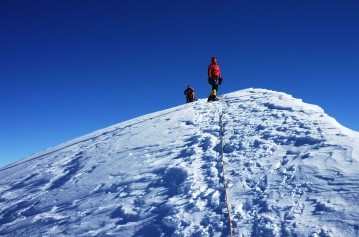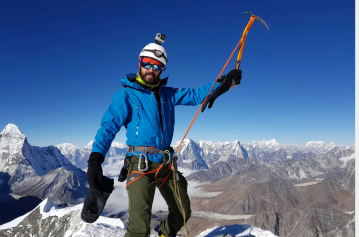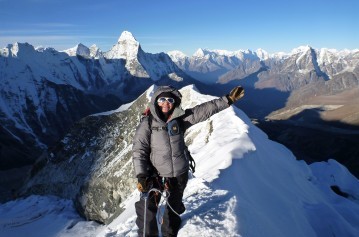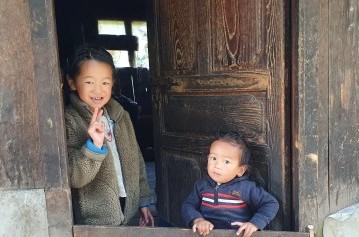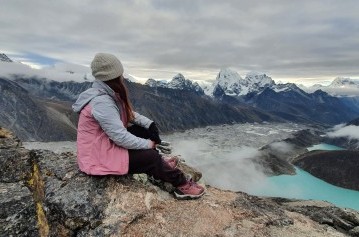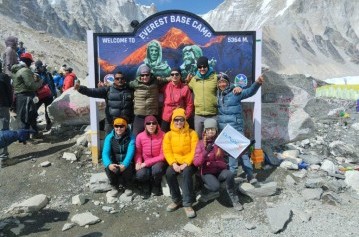
The Ultimate Adventure in Everest Region, Nepal
The Everest region of Nepal is a highly admired destination for travellers worldwide. Home to Mount Everest (8,848 m), the tallest peak on the planet, this remote eastern region offers thrilling trekking experiences and a chance to witness the world's highest mountain up close. Trekking in the Everest region quenches the desire to know Everest intimately and provides a deep connection with the majestic Himalayas.
Everest Region of Nepal is the adventurous destination as well as the most admired destination by the travellers around the world. Mount Everest (8848 m), the tallest pinnacle in the planet is located in the remote eastern region of Nepal. Trekking in the Everest region is the adventurous and the thrilling and every person would love to see the highest mountain in the lifetime. Trekking in the region erases the quest of knowing Everest intensely. The trek to Mount Everest is famed not only for the absolute height of Everest, Everest region, called Khumbu in Nepali, is the dwelling for many of the world's supreme and many notable mountains. Trekking in the Everest vicinity offers you with miscellaneous flora and fauna, unspoiled lakes, rich Buddhist culture and rituals of the Sherpas, and secluded monasteries in the lap of mighty Himalayas. The Sherpas are celebrated mountaineers living in soaring villages of Everest region.
Why Trek in the Everest Region?
Iconic Peaks
- Khumbu Region: Known as Khumbu in Nepali, the Everest region boasts not only Mount Everest but also many of the world's most notable mountains. Peaks like Ama Dablam (6,856 m), Lhotse (8,516 m), Nuptse (7,879 m), Pumori (7,145 m), Cho Oyu (8,153 m), and Makalu (8,475 m) grace the landscape, along with smaller peaks like Island Peak, Mera Peak, and Lobuje Peak.
Rich Biodiversity
- Flora and Fauna: Discover diverse flora and fauna in the unspoiled landscapes, pristine lakes, and lush forests of the Everest region.
Cultural Heritage
- Sherpa Culture: Immerse yourself in the rich Buddhist culture and rituals of the Sherpa community. Visit secluded monasteries nestled in the lap of the mighty Himalayas.
Sherpa Hospitality
- Warm Welcome: Experience the warmth and hospitality of the celebrated Sherpa mountaineers, who reside in the high-altitude villages of the Everest region.
Popular Trekking Routes
Everest Base Camp Trek
- Consistently ranked among the top ten treks in the world, this classic route takes you to the base of Mount Everest. Traverse high Himalayan passes and experience the incredible scenery and cultural richness of the Khumbu region.
Everest Base Camp Trek via Gokyo & Cho La Pass
- Popular Trail; Combine the classic Everest Base Camp route with a visit to the stunning Gokyo Lakes and a challenging crossing of the Cho La Pass.
Everest Base Camp from Jiri
- Classic Route from Jiri, we can start your trek from Jiri, following the footsteps of early Everest expeditions for a more traditional approach to the base camp.
Gokyo Lakes Trek
- Explore the stunning turquoise lakes of Gokyo, offering panoramic views of Everest and other towering peaks.
Everest Three Passes Trek
- High Passes; A challenging trek that crosses three high passes—Kongma La, Cho La, and Renjo La—providing a comprehensive experience of the Everest region.
Tengboche Monastery Trek
- Monastic Visit; A shorter trek that includes a visit to the largest monastery in the Khumbu region, with breathtaking views of Everest and Ama Dablam.
EBC Trek and return by Heli
- Lifetime experience; Trek to Everest Base Camp and return by helicopter for a unique and exhilarating experience.
Everest Amadablam Trek
- Heart of Everest; The Everest Amadablam Trek is a perfect blend of adventure and cultural immersion, offering an unforgettable experience for trekkers seeking to explore the heart of the Himalayas.
Essential Information for Everest Trekking
Best Time to Visit: The most favourable time for the Everest Region trek is from March to May (Spring) and mid-September to November (Autumn). These seasons offer clear skies, stable weather conditions, and optimal trekking conditions for a safe and enjoyable journey. Also, EBC trek can be done in winter, as it is less crowd with snow-capped mountains.
Trekking Permits: Necessary permits include the Sagarmatha National Park Permit, Khumbu Gaupalika Tax, and Trekkers' Information Management System (TIMS) card.
Lodging Options: Lodges are available along the routes, offering basic amenities and local cuisine. Special hotels are available in destinations like Lukla, Namche, Gokyo, and Debuche.
Essential Gear: Warm clothing, sturdy trekking boots, trekking poles, a good sleeping bag, and a first-aid kit are essential.
Embark on your ultimate adventure in the Everest region and experience the awe-inspiring beauty and rich cultural heritage of the Himalayas. Whether you're a seasoned trekker or a first-time adventurer, the Everest region promises a journey of a lifetime.
Experience the Everest Region Trek with Asian Adventure Treks & Expedition - Professional Planner for your vacations!
Featured trips for Everest Region
Easy trekking are basically for the beginners. This kind of treks is typically done in the lower hilly region of elevation below 3500 metre. The trails in this trek are generally vertical and walking time is 3 - 5 hours everyday.
Moderate types of trekking generally take place on the low altitude zone crossing the passes below the elevation of 4500 meters. Normally the walking is from 4 - 6 hours each day.
Hard kind of trekking routes crosses through the wild and adventurous trails and sometimes passes through the snow covered high passes between 4500 meters to 5500 meters. Usually the walks takes from 7-8 hours everyday.
Generally this types of routes are demanding long distance treks where the walks takes up to 9 hours each day. Each trail crosses at least one pass over 5500 meters frequently contains hardly ever explored regions. Challenging are the expedition types of activity.
